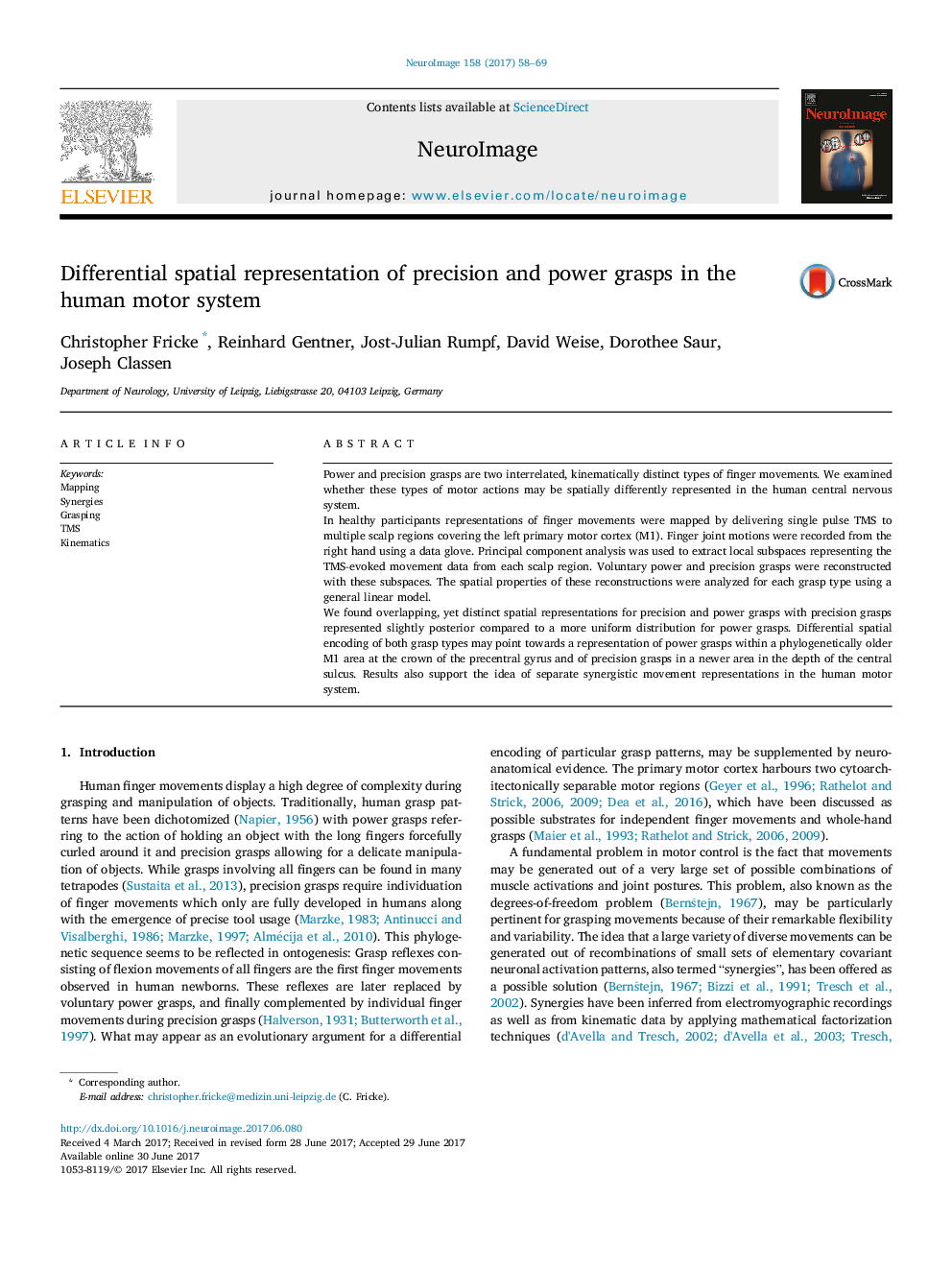| Article ID | Journal | Published Year | Pages | File Type |
|---|---|---|---|---|
| 5630963 | NeuroImage | 2017 | 12 Pages |
â¢TMS-evoked movements were sampled using a data 1 glove and used to reconstruct voluntary precision and power grasps.â¢Differences in spatial representation were found for both types of grasps at the level of M1.â¢Findings would be consistent with a representation of precision grasps in posterior M1 and power grasps in anterior M1.â¢This may point to spatially separate motor synergies in phylogenetically different parts of M1.
Power and precision grasps are two interrelated, kinematically distinct types of finger movements. We examined whether these types of motor actions may be spatially differently represented in the human central nervous system.In healthy participants representations of finger movements were mapped by delivering single pulse TMS to multiple scalp regions covering the left primary motor cortex (M1). Finger joint motions were recorded from the right hand using a data glove. Principal component analysis was used to extract local subspaces representing the TMS-evoked movement data from each scalp region. Voluntary power and precision grasps were reconstructed with these subspaces. The spatial properties of these reconstructions were analyzed for each grasp type using a general linear model.We found overlapping, yet distinct spatial representations for precision and power grasps with precision grasps represented slightly posterior compared to a more uniform distribution for power grasps. Differential spatial encoding of both grasp types may point towards a representation of power grasps within a phylogenetically older M1 area at the crown of the precentral gyrus and of precision grasps in a newer area in the depth of the central sulcus. Results also support the idea of separate synergistic movement representations in the human motor system.
